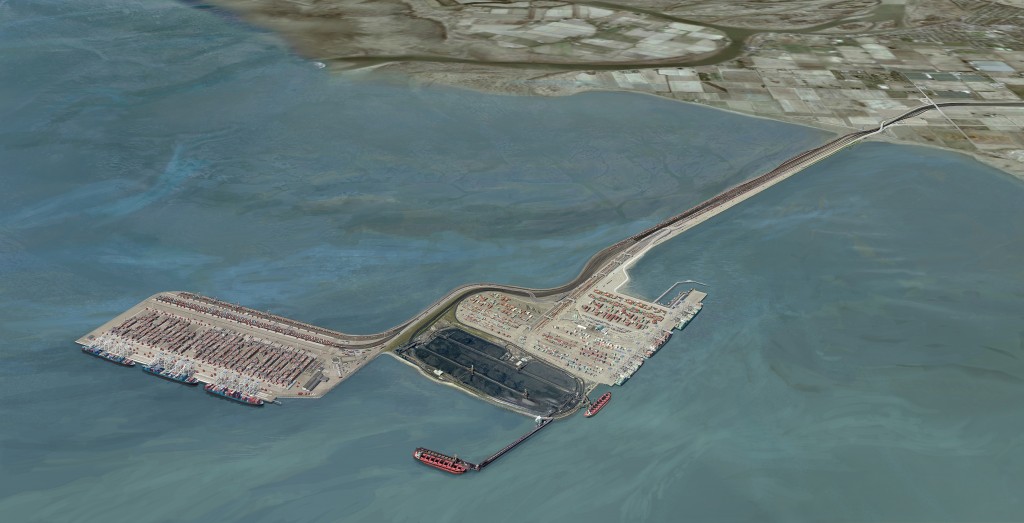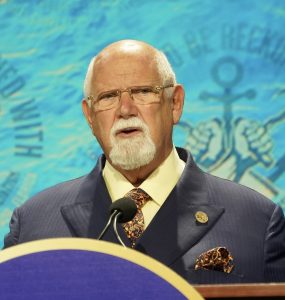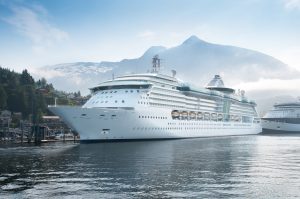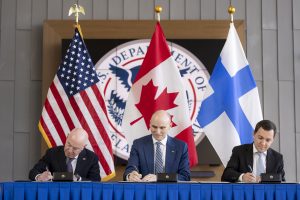By Leo Ryan, Editor Maritime Magazine
The Canadian government has given the green light to a controversial massive new container terminal project at Roberts Bank in the Port of Vancouver, but with several hundred severe legally-binding conditions to protect the environment.
The announcement on April 20 ended a prolonged period of federal environmental assessment since 2013 during which environmental groups, First Nations and local communities have voiced strong concerns and opposition. Assuming other regulatory steps are soon completed (including approval from the British Columbia government itself), construction could begin on a new facility that could potentially be off and running in about six years.
The $3 billion Roberts Bank Terminal 2 (RBT2) project proposed by the Vancouver Fraser Port Authority consists of an artificial peninsula (per photo) that would be adjacent to the present Deltaport. It will provide 2.4 million TEUs of additional container capacity annually.
“With 370 environmental protection measures that the port must meet, we have set a high bar for this project to proceed,” said Steven Guilbeault, Minister of the Environment and Climate Change. “For the first time ever, we are asking a proponent to put up $150 million to guarantee the strict environmental conditions are met and habitats are protected for species such as the Western Sandpiper. Moreover, this decision is paired with massive government investment in the protection of species like Chinook salmon and endangered Southern resident killer whales.”
Mr. Guilbeault also affirmed: “This project will reduce the congestion of ships in the Vancouver area and, combined with substantial government investment, can be done in a way that protects vital local habitats.”
The conditions require the monitoring of noise levels to remain at or below a certain baseline level to protect the Southern Resident Killer whales and the installation of infrastructure to permit the safe passage of fish. Other measures include the creation of a marine mammals’ detection and response plan to protect marine mammals during construction.
“With this approval, we can advance one of Canada’s most important trade infrastructure projects to date, bolster our national supply-chain resilience, and deliver generational economic benefits for Canadians and Canadian businesses,” said Robin Silvester, president and CEO of the Vancouver Fraser Port Authority(VFPA).
A government press release noted that Canada’s Pacific Gateway is Canada’s most important trade corridor, with over $275 billion of trade passing through the Vancouver Fraser Port Authority each year. “In the coming years, the Government believes Canada’s major west coast ports will reach maximum capacity, meaning congestion will become a chronic issue. This project would increase the port’s capacity by 50 per cent. Without this port expansion, $3 billion in added GDP would be jeopardized by capacity shortages. The project is also expected to create hundreds of jobs during construction, and several hundred more both onsite and off-site during operations.”
Throughout the environmental assessment, the Impact Assessment Agency of Canada actively consulted with 48 Indigenous Nations who could potentially be impacted by the project. Since 2011, the VFPA has also engaged with a large number of potentially impacted Indigenous groups, and has indicated that it has successfully concluded impact benefit agreements with a total of 26 Indigenous Nations.
The project is expected to create 1,500 direct jobs and 15,000 indirect jobs once built. The port supports 115,300 jobs across Canada, pays $7 billion in wages, and contributes about $12 billion of GDP to Canada annually.
The RBT2 project has also sparked a big conflict – involving legal proceedings – between the VFPA and GCT Terminals, whose fourth berth alternative at the Roberts Bank site was turned down by the Port of Vancouver several years ago.
(Artist rendering image of RBT2 from VFPA)








